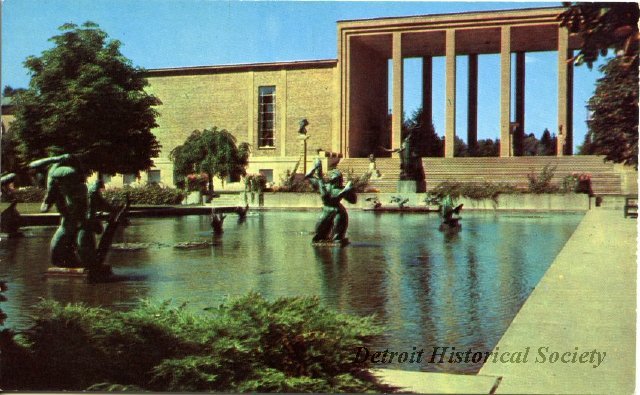The Cranbrook Educational Community, listed on the National Register of Historic Places in 1975 and designated a National Historic Landmark in 1989, was founded in 1904 by newspaper mogul George Gough Booth and his wife, Ellen Scripps Booth. The organization takes its name from Cranbrook, England, the birthplace of the George Booth’s father. Located in Bloomfield Hills, Michigan, the campus consists of Cranbrook Schools, Cranbrook Academy of Art, Cranbrook Art Museum, Cranbrook Institute of Science and Cranbrook House and Gardens.
In 1904, the Booths purchased the land that now consists of the Cranbrook Educational Community as a location for their summer home. Cranbrook is renowned for its architecture in the Arts and Crafts Movement style by chief architects Albert Kahn and Eliel Saarinen. In building the Cranbrook Community, the Booths hoped to create cultural institutions that would enrich the lives of everyone in the Midwest.
The first school to open on the Cranbrook grounds was the Bloomfield Hills School in 1922. It was intended as the community school for local area children, but as enrollment increased it became necessary to enlarge the facility which, when completed, became the Brookside School. Following its completion, Booth began building the Cranbrook School for Boys, an all-boys college-preparatory school. Ellen Scripps Booth opened the Kingswood School for Girls in September 1931. Unlike the Cranbrook School for Boys, which featured several buildings, the Kingswood School for Girls consisted of one building which included all necessary features including dormitories, a dining hall, auditorium, classrooms, and other amenities. Cranbrook Schools today include a co-ed Upper School, separate Kingswood Boy’s and Girl’s Middle Schools, and Brookside Lower School.
Founded in 1932, the Cranbrook Academy of Art is known for its apprenticeship method of teaching, in which a small group of students study under a single artist-in-residence for the duration of their curriculum. Cranbrook has been home to some of the world’s most renowned designers and artists. Eero Saarinen, Charles and Ray Eames, Daniel Libeskind, Michael and Katherine McCoy, and Jun Kaneko have all taught at the school. Students have included Florence Knoll, Harry Bertoia, Jack Lenor Larsen, Nick Cave, Tony Matelli, Niels Diffrient, Lorraine Wild, and Hani Rashid.
Cranbrook Art Museum maintains a contemporary art collection including works by Harry Bertoia, Maija Grotell, Carl Milles, Robert Motherwell, Andy Warhol and Roy Lichtenstein. Completed in 1942, the museum is housed in the same building as the Academy of Art.
The Cranbrook Institute of Science, opened in 1933, holds a collection of specimens related to natural history and science. The museum grounds feature permanent and changing exhibition halls, an outdoor science garden, planetarium, observatory, a T-Rex skeleton, and more.
The Cranbrook House and Gardens are the centerpiece of the campus. The 1909 English Arts and Crafts-style house was designed by Kahn for the Booths’ use. Ten first-floor rooms contain tapestries, hand-carved woodworking and Arts and Crafts-style antiques. The upper floors of the house are used for the executive offices of the Cranbrook Educational Community. The 40-acre gardens were originally designed by George Booth, and include numerous different types of flora.
RELATED ITEMS IN THE COLLECTION
View all items related to the Cranbrook Educational Community
